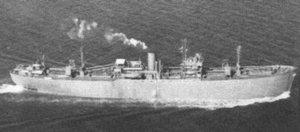
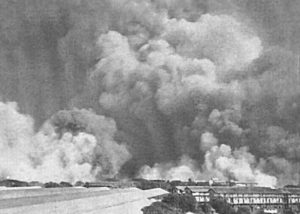 When a ship explodes in a port, the first assumption is that terrorists attacked, but that is not always the case. On April 14, 1944, cargo ship Fort Stikine exploded in a berth in the docks of Bombay, India, which is now known as Mumbai. The catastrophic explosion killed 1,300 people and injured another 3,000. It’s possible that the reason it was considered terrorists, or in this case, Japanese sabotage, was because the incident happened during World War II. Nevertheless, the explosion was actually caused by a tragic accident.
When a ship explodes in a port, the first assumption is that terrorists attacked, but that is not always the case. On April 14, 1944, cargo ship Fort Stikine exploded in a berth in the docks of Bombay, India, which is now known as Mumbai. The catastrophic explosion killed 1,300 people and injured another 3,000. It’s possible that the reason it was considered terrorists, or in this case, Japanese sabotage, was because the incident happened during World War II. Nevertheless, the explosion was actually caused by a tragic accident.
The ship, The Fort Stikine was a Canadian-built steamship weighing 8,000 tons. On February 24, Fort Stikine left Birkenhead, England, making a stop in Karachi, Pakistan, before continuing on to dock at Bombay. The cargo on Fort Stikine that day included hundreds of cotton bales, gold bullion and, most notably, 300 tons of trinitrotoluene, better known as TNT or dynamite. I’m sure you can begin to get a picture of what might have triggered this tragic accident. Despite the well-known fact that cotton bales were prone to combustion, the 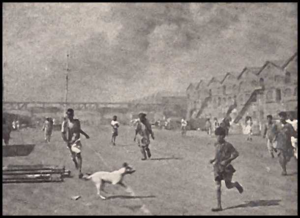 cotton was stored one level below the dynamite. I’m sure that with a little imagination, you can probably guess what happened next.
cotton was stored one level below the dynamite. I’m sure that with a little imagination, you can probably guess what happened next.
While the ship was being loaded with her cargo, someone noticed smoke coming from the cotton bales. Firefighters were sent to investigate, but emergency measures, such as flooding that part of the ship, were not immediately taken. Instead, about 60 firefighters tried to put out the fire with hoses throughout the afternoon. For some reason, the TNT was not unloaded during the firefighting efforts, creating a recipe for disaster. Before long, it became clear that the firefighters were not going to be able to get control of the fire, and they were ordered off the ship, but they kept dousing the fire from the docks. Unfortunately, their efforts were in vain. The TNT ignited, and at 4:07pm, and the resulting explosion rocked the bay area. The initial force of the blast actually lifted a nearby 4,000-ton ship from the bay onto the land. Windows shattered up to a mile away. A 28-pound gold bar from the Fort Stikine, worth many thousands of dollars, was found a mile away. Everyone in close vicinity of the ship was killed.
In addition to the Fort Stikine, twelve other ships at the docks were destroyed and many more were seriously damaged. The initial blast threw burning debris all over the port. Fires broke out, causing further explosions. In 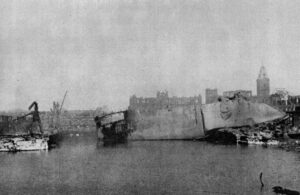
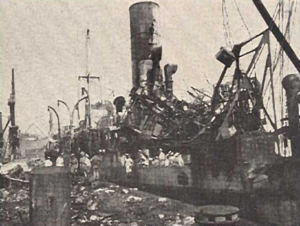 desperation, military troops were brought in to fight the raging fires and some buildings were demolished just to stop it from spreading. For three days after the explosion, the main business center of Bombay was not safe for anyone to be in. A valuable lesson was learned, but at a horrible price. So many lives lost to learn that cotton and TNT should probably never be on the same ship, but if they are, the cotton should never be stored right below the TNT.
desperation, military troops were brought in to fight the raging fires and some buildings were demolished just to stop it from spreading. For three days after the explosion, the main business center of Bombay was not safe for anyone to be in. A valuable lesson was learned, but at a horrible price. So many lives lost to learn that cotton and TNT should probably never be on the same ship, but if they are, the cotton should never be stored right below the TNT.


Leave a Reply